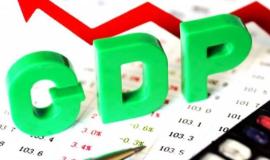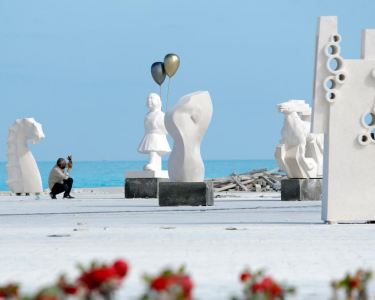
PRETORIA, June 4 (NNN-SANEWS) — Real Gross Domestic Product (GDP) has increased marginally by some 0.1% during the first quarter of 2025, following an increase of 0.4% in the previous quarter.
Despite the sluggish expansion, the South African economy continues clawing back ground lost from the blow of the COVID-19 pandemic, which saw GDP drop to a low of R954 billion in the second quarter of 2020 to R1 170 billion in the first quarter of 2025.
“The agriculture, forestry and fishing industry increased by 15.8%, contributing 0.4 of a percentage point to the positive GDP growth. This was primarily due to increased economic activities reported for horticulture and animal products.
“The transport, storage and communication industry increased by 2.4%, contributing 0.2 of a percentage point. Increased economic activities were reported for land transport, air transport and transport support services,” Statistics South Africa (Stats SA) said.
According to the institution, finance, real estate and business services increased by some 0.2% adding 0.1% to the GDP.
“Increased economic activities were reported for insurance and pension funding and auxiliary activities.
“The trade, catering and accommodation industry increased by 0.5%, contributing 0.1 of a percentage point. Increased economic activities were reported for retail trade, motor trade, accommodation and food and beverages,” Stats SA said.
On the decrease was the manufacturing industry which contracted by 2.0%.
“Seven of the ten manufacturing divisions reported negative growth rates. The largest negative contributions were reported for the petroleum, chemical products, rubber and plastic products; food and beverages; and motor vehicles, parts and accessories and other transport equipment divisions.
“The mining and quarrying industry decreased by 4.1%, contributing -0,2 of a percentage point. The largest negative contributors were platinum group metals,” the institution noted.
Household final consumption expenditure (HFCE) is also on the rise – increasing by some 0.4% and contributing 0.3% to total growth.
“The main positive contributors to the increase in HFCE were expenditures on transport [1.1% and contributing 0.2 of a percentage point], food and non-alcoholic beverages [0.5% and contributing 0.1 of a percentage point], restaurants and hotels [1.4% and contributing 0.1 of a percentage point], ‘other’ [0.6% and contributing 0.1 of a percentage point] and health [0.8% and contributing 0.1 of a percentage point].
“The negative contributors were expenditures on recreation and culture, communication, and housing, water, electricity, gas and other fuels. Final consumption expenditure by general government decreased by 0.1%. This was mainly driven by decreases in compensation of employees and purchases of goods and services.
“Gross fixed capital formation decreased by 1.7%, contributing -0.2 of a percentage point. The negative contributors to the decrease were residential buildings [-5.8% and contributing -0.6 of a percentage point], machinery and other equipment [-1.4% and contributing -0.6 of a percentage point], construction works [-2.8% and contributing -0.5 of a percentage point] and transport equipment [-3.1% and contributing -0.3 of a percentage point],” Stats SA said.
Exports and imports also presented mixed results during the first quarter.
“Net exports contributed negatively [-0.3 of a percentage point] to expenditure on GDP. Exports of goods and services increased by 1.0%, largely influenced by increased trade in vegetable products, vehicles and transport equipment excluding large aircraft and mineral products.
“Imports of goods and services increased by 2.0%, largely influenced by increased trade in chemical products, mineral products and machinery and electrical equipment,” the statement concluded. — NNN-SANEWS






